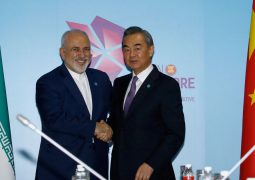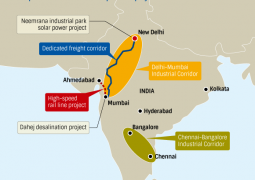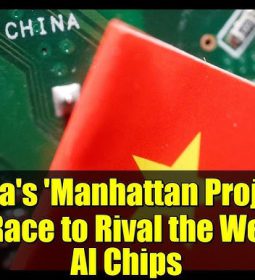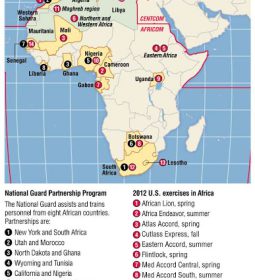Huawei’s US ban
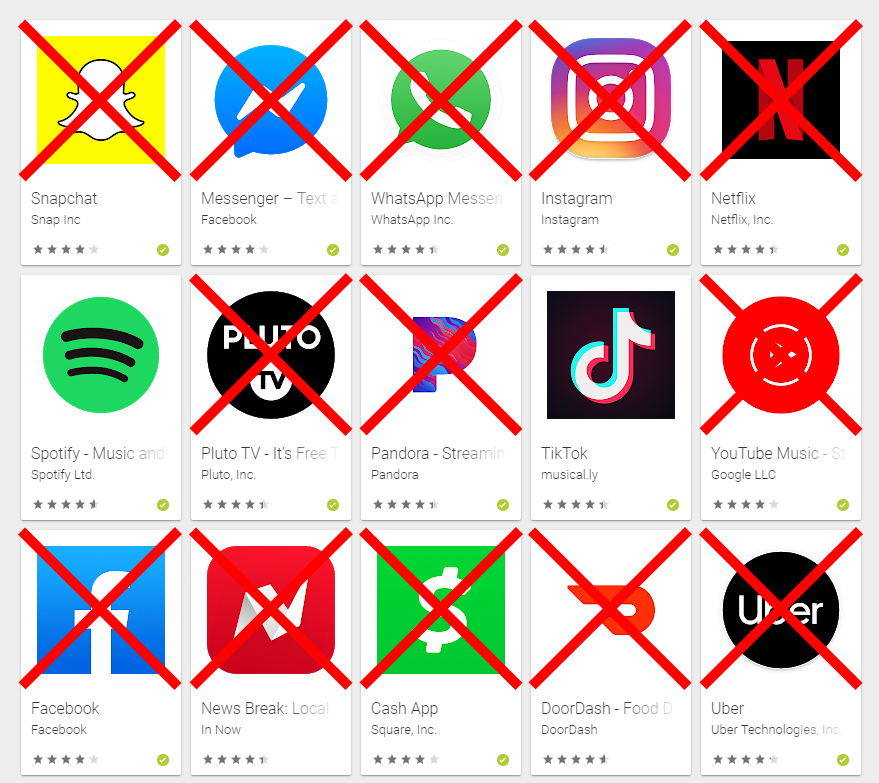
Huawei’s US ban: A look at the hardware (and software) supply problems
Huawei’s hardware independence is actually pretty good! The software, though…
Ron Amadeo
- Red is the HiSilicon Kirin 980 with SK Hynix RAM on top, orange is the Micron flash storage, and yellow is a HiSilicon audio chip.
- The two green chips are HiSilicon RF Transceivers, light blue is a Skyworks FEM, dark blue is a Qorvo FEM.
- This is what a P30 Pro looks like assembled, by the way.
- There is still a camera bump.
Huawei
- The front design is pretty standard. There’s a notch.
Huawei
- There’s no earpiece. Instead, you get a vibrating screen.
pretty good list of components and their countries of origin.
The Power of HiSilicon
Huawei
The System on a Chip is the heart of any smartphone, supplying most of your basic three-letter computer components like the CPU, GPU, LTE modem, GPS, and more. Huawei is better off than most companies in this area—it’s one of the few companies (along with Samsung) that has its own chip-design division. Huawei’s “HiSilicon” group designs SoCs for its smartphones, and the Huawei P30 Pro uses the HiSilicon Kirin 980 SoC. HiSilicon has its own LTE modem solution and is a leader in 5G modems.
View more storiesMost Android manufacturers rely on Qualcomm—a US company—for its Snapdragon SoCs with integrated LTE modems. Qualcomm has a near monopoly on the high-end smartphone market, thanks not only to reliably producing yearly SoC upgrades, but also by aggressively investing in and patenting cellular technologies. Qualcomm was one of the first companies to bring LTE to market, and it has been leading the charge toward 5G, too. Qualcomm has no doubt been patenting everything it can find along the way.
Qualcomm has been sued and fined for anti-competitive patent licensing, and it seems committed to creating a legal headache for any company that doesn’t use its products. Apple and Qualcomm were feuding over Apple’s use of Intel modems in its iPhones, and when the two companies settled, Intel quit the 5G modem business that same day. Samsung has its own Exynos line of processors but usually doesn’t ship them in the US, instead using Qualcomm chips.
Huawei’s Kirin 980 is based on the ARM architecture, which Huawei licenses from ARM Holdings PLC. ARM’s headquarters is in England, but it now has a Japanese parent company, Softbank. Huawei is a fabless chip designer, meaning the company doesn’t own a semiconductor foundry, so it must get its chip designs manufactured somewhere. Kirin chips are usually made at TSMC, (Taiwan Semiconductor Manufacturing Company Limited), which, wouldn’t you know it, is headquartered in Taiwan. The running theme of this article is “Samsung would also be an option”—and for chip fabrication, Samsung would also be an option. Samsung (which is based in South Korea) produces Qualcomm’s flagship chips and is actually one of the leading silicon manufacturers on Earth. We’re doing good so far!
Like Huawei, BOE has the blessing and financial backing of the Chinese Government, which helps explain its sudden and meteoric rise—Korea owns the OLED market, and BOE is China’s answer. With the might of China behind it, BOE has started to go after Samsung Display’s biggest customers and is trying to woo Apple to become a supplier for future iPhone displays. BOE even has the gall to start courting Samsung Electronics as a customer, hoping the company will dump its usual OLED supplier—uh—Samsung Display, in favor of BOE. Good luck with that.
Samsung has tried to stay ahead of this new Chinese rival with superior technology, mainly via the development of flexible displays for new-age foldable smartphones like the Galaxy Fold. Samsung invested six years of research and $130 million to develop bendable OLEDs that (sort of) work, so surely this will give Samsung some breathing room against its Chinese rival, right? Sadly for Samsung, South Korean prosecutors say Samsung’s flexible display technology was stolen by one of its suppliers and sold to an unnamed display firm in China. After the Galaxy Fold, the next big foldable smartphone just so happens to be from China, and it’s the Huawei Mate X. The supplier of the Mate X’s flexible OLED display is BOE. No doubt BOE’s technology was completely self-developed.
cameras all come from the Land of the Rising Sun, specifically Sony, which is the leading camera supplier for smartphones. Huawei uses Sony sensors for all four of its cameras: the 40MP main camera, the 20MP wide-angle lens, the time-of-flight camera, and even the 5x “SuperZoom” lens. You’ll find Sony cameras in most high-end smartphones, including Apple and Google devices. Samsung Semiconductor is another option for camera modules, and some devices, like the Galaxy S10, dual source Samsung and Sony sensors.
Of course, if you look on the back of the Huawei P30 Pro, the German camera brand Leica gets all the credit for the camera. With the CMOS sensors from Sony, that only leaves the lenses and maybe the software as Leica contributions.
Huawei’s “SuperZoom” camera enables a 5x optical zoom on a smartphone, thanks to an innovative periscope design. While the sensor at the end of the periscope is from Sony, the actual periscope component was built by Sunny Optical Technology—a Chinese company—with IP from Corephotonics in Israel.
The P30 Pro motherboard—which is a neat triple-stacked design like the iPhone X—comes from Unimicron Technology Corporation in China. In iFixit’s teardown of the P30 Pro, the RAM came from SK Hynix—the “SK” stands for “South Korea”—and we run into our first problem: the flash storage, which was supplied by US-based Micron. It’s not unusual for companies to use multiple suppliers for some chips, though, especially widely manufactured components like flash memory or displays. If we look at the P30 Pro teardown in EE Times, the flash memory changes from Micron to Toshiba, a Japanese company, but the RAM changes from SK Hynix to Micron! Either way it looks like Huawei has non-US sources for both components. Samsung Semiconductor (South Korea) would be an option for flash storage and RAM, too.
There are a few miscellaneous chips from US companies in the P30. The EE Times teardown spotted a SMPS (switched-mode power supply) chip from Broadcom, and a six-axis accelerometer and gyro was spotted from Invensense, which has a headquarters in the US, but a Japanese parent company, TDK. Invensense is the name in motion control chips, powering motion in the Nintendo Wii, the Oculus Rift, HTC Vive, Microsoft Hololens, and a million other things.
The giant list of LTE band support you see in a smartphone spec sheet is supported by a variety of LTE antennas, and in the P30 Pro there is a mid-to-high band Front End Module (FEM) from Qorvo and a Low Band FEM from Skyworks, both of which Huawei will have a tough time acquiring due to their US origins. Qualcomm, the undisputed champion of LTE, will also sell you RF modules, as will Broadcom.
The NFC comes from NXP, which is headquartered in the Netherlands. NXP co-invented NFC along with Sony and has been the biggest name in NFC ever since. All the usual players are chasing NXP, including Broadcom, Samsung, and Qualcomm. Qualcomm actually tried to buy NXP once, but Chinese regulators shut the deal down.
Huawei’s own chip company, HiSilicon, is in the mix, too. The audio chip is built by HiSilicon, along with the RF transceiver for 2G, 3G, and 4G connections, and various power-management chips.
iFixit’s battery in the Huawei P30 Pro is from Huizhou Desay Battery Co., Ltd, named after a Chinese city. Other options include Samsung SDI, infamous for the explosive Galaxy Note 7 batteries and LG Chem, both from South Korea. Amperex Technology Ltd (ATL) was another Note 7 battery supplier, but the Chinese company was given a clean bill of health—by Samsung—in the Note 7 battery investigation.
Like we saw with ZTE, a lot of companies would struggle if they were cut off from US suppliers. ZTE’s supply situation was so bad, the company had to completely shut down when the Trump administration cut it off from US suppliers. On the hardware side of things, ZTE was dependent on Qualcomm, which is also the case with most other OEMs. Huawei is not like most other OEMs and seems to have given itself multiple hardware options when it comes to most components. Having an in-house chip division really makes all the difference.
ZTE also couldn’t cut it without Google’s version of Android, and Huawei is currently facing down the same problem. Future devices will be cut off from the Google Play Store, Google Play Services, and a ton of other killer Google apps. Huawei will stop getting advanced access to future versions of Android, which will hurt its security patches, OS update speed, and general software competitiveness. Huawei is used to operating without the Google Play Store, though—this is a normal occurrence in China, where Google doesn’t do much business and has no presence in the Android devices sold there. There is no Play Store in China, leaving a fragmented mess of app stores.
As one of the most popular hardware manufacturers in China, Huawei has one of the most popular app stores in China. The company has done some saber-rattling over the years about building its own operating system without Android, but it seems much more sensible to just fork Android, doesn’t it? Huawei already operates this way in China, and it would just be extending its China model to the rest of the world.
Even if Huawei does get its hardware supply problems solved and comes up with a viable OS and an app store solution, I think the real problem for Huawei might be apps. Remember the executive order prohibits “any acquisition, importation, transfer, installation, dealing in, or use of any information and communications technology or service,” and it is very broad and could be interpreted to mean that US citizens and companies aren’t allowed to supply Huawei with smartphone apps, especially with descriptors like “installation” and “service” in the president’s order. Huawei could solve everything and roll out an app store, but it might be illegal to submit apps to the Huawei app store.
The top Play Store apps, minus most Google apps, with the US apps crossed out.
Google / Ron Amadeo
The problem for Huawei is that most of your favorite apps probably come from the US. Of course there is Google, which would mean no Gmail, Calendar, Google Maps, Waze, YouTube, or Photos. Facebook is a US company, too, so then Huawei would get no regular Facebook app, Messenger, Whatsapp, or Instagram. Microsoft is out, too, which means no Office, Skype, or OneDrive. We could probably build a top-20 app store list with the other US companies, like Snapchat, Netflix, Hulu, Amazon, Twitter, Roku, Soundcloud, Pandora, Amazon, Uber, Lyft, Tinder, eBay, Shazam, and Venmo.
Gamers would be missing out on apps from Discord, Twitch, Valve, Blizzard, Epic, EA, and King. You’re probably better off listing apps that aren’t from US companies. In which case Spotify and Mojang are from Sweden, Gameloft is French, and Tiktok is Chinese. That’s the most I could come up with from top app lists.
Buying a Huawei phone would also mean living with the continual fear that the hot new app would not be available on your device, just because of the country of origin. A phone with no US apps, if that is the way the order will be interpreted, would be a tough sell.
Hardware seems doable, an OS seems less doable, but wow, the app problem…
Huawei’s parts audit is looking surprisingly good in the hardware department. The company has a diverse set of suppliers, and it seems to have plenty of non-US hardware options. Really the difference is HiSilicon, because without its own SoC division, the company would probably be reliant on the US’ Qualcomm Snapdragon products.
Remember: we just focused on the P30 Pro, both because it is Huawei’s big flagship and because there is a plethora of information available about it. We probably couldn’t do the same thing for a cheaper, less well-known device. This is also just focusing on Huawei’s smartphone business; it’s network equipment and laptop businesses are an entirely different matter.
For the software, it’s possible Huawei could survive on forked Android. It would definitely put the company at a disadvantage, but it would be better than trying to start from scratch with zero apps, zero developers, and an unfamiliar development environment. The biggest problem would be the distribution of apps if the executive order is interpreted to cover apps. Blocking US app developers from submitting to a Huawei app store would be an absolutely devastating blow for the company. The lack of an app ecosystem would give a Huawei OS (Android-based or otherwise) basically zero chance of succeeding in the market.
Hopefully we don’t have to actually see what the endgame looks like for Huawei here. As was the case for ZTE, there’s a possibility the US and China come together, negotiate, and end this trade war brinkmanship. For now, the 90-day exemption provides some level of sanity, allowing Google and Huawei to provide security updates to existing users. No one knows what Huawei’s status will be at the end of 90 days.



